Teams Message Extension Action Bot
Bot Framework v4 Conversation Bot sample for Teams.
There are two basic types of Messaging Extension in Teams: Search-based and Action-based. This sample illustrates how to build an Action-based Messaging Extension.
This sample is a Spring Boot app and uses the Azure CLI and azure-webapp Maven plugin to deploy to Azure.
Included Features
- Bots
- Message Extensions
- Action Commands
- Interaction with Messaging Extension action
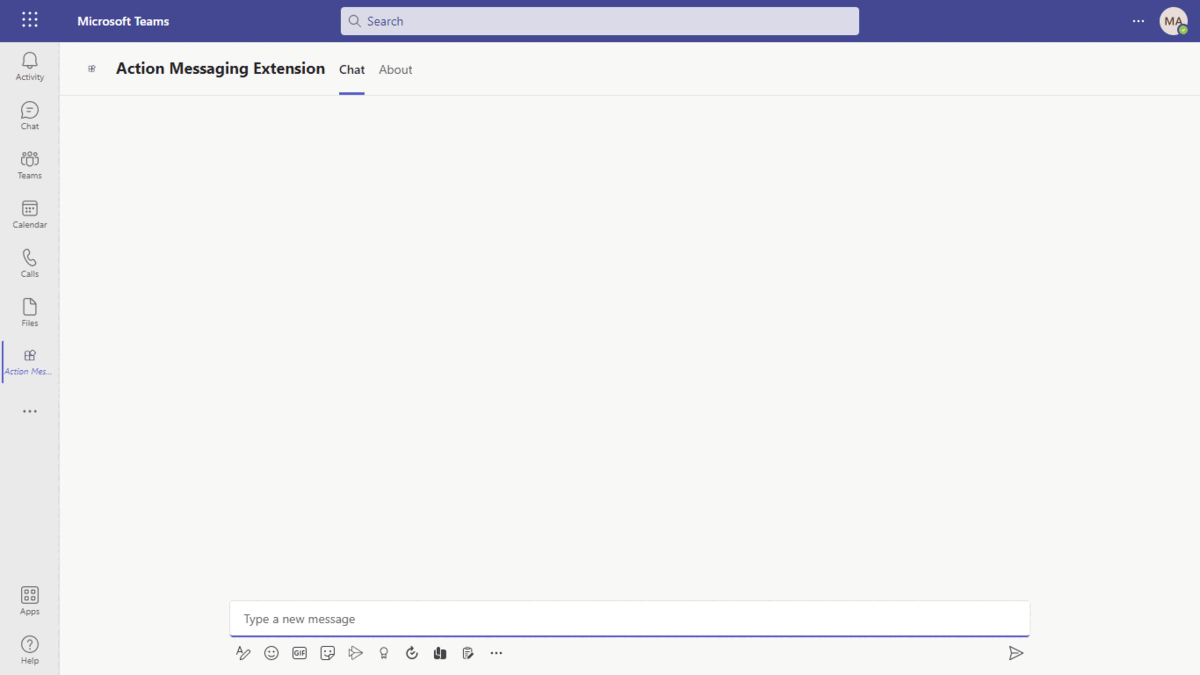
Try it yourself - experience the App in your Microsoft Teams client
Please find below demo manifest which is deployed on Microsoft Azure and you can try it yourself by uploading the app package (.zip file link below) to your teams and/or as a personal app. (Sideloading must be enabled for your tenant, see steps here).
Teams Messaging Extensions Action: Manifest
Prerequisites
- Intall Java 1.8+ Java
- Install Maven
- Setup for Java and Maven Setup
- An account on Azure if you want to deploy to Azure.
- Microsoft Teams is installed and you have an account
- dev tunnel or ngrok latest version or equivalent tunnelling solution
Setup
Note these instructions are for running the sample on your local machine, the tunnelling solution is required because the Teams service needs to call into the bot.
Run ngrok - point to port 3978
ngrok http 3978 --host-header="localhost:3978"Alternatively, you can also use the
dev tunnels. Please follow Create and host a dev tunnel and host the tunnel with anonymous user access command as shown below:devtunnel host -p 3978 --allow-anonymousSetup for Bot
In Azure portal, create a Azure Bot resource.
- For bot handle, make up a name.
- Select "Use existing app registration" (Create the app registration in Microsoft Entra ID beforehand.)
- Choose "Accounts in any organizational directory (Any Azure AD directory - Multitenant)" in Authentication section in your App Registration to run this sample smoothly.
- If you don't have an Azure account create an Azure free account here
In the new Azure Bot resource in the Portal,
- Ensure that you've enabled the Teams Channel
- In Settings/Configuration/Messaging endpoint, enter the current
httpsURL you were given by running the tunnelling application. Append with the path/api/messages
Clone the repository
git clone https://github.com/OfficeDev/Microsoft-Teams-Samples.gitUpdate the
resources/application.propertiesfile configuration in your project, for the bot to use the Microsoft App Id and App Password from the Bot Framework registration. (Note the App Password is referred to as the "client secret" in the azure portal and you can always create a new client secret anytime.)From the root of this project folder: (
samples/msgext-action/java)- Open a terminal and build the sample using
mvn packagecommand - Install the packages in the local cache by using
mvn installcommand in a terminal - Run it by using
java -jar .\target\bot-teams-messaging-extensions-action-sample.jarcommand in a terminal
- Open a terminal and build the sample using
This step is specific to Teams.
- Edit the
manifest.jsoncontained in theappManifestfolder to replace your Microsoft App Id (that was created when you registered your bot earlier) everywhere you see the place holder string<<YOUR-MICROSOFT-APP-ID>>(depending on the scenario the Microsoft App Id may occur multiple times in themanifest.json) - Edit the
manifest.jsonforvalidDomainswith base Url domain. E.g. if you are using ngrok it would behttps://1234.ngrok-free.appthen your domain-name will be1234.ngrok-free.appand if you are using dev tunnels then your domain will be like:12345.devtunnels.ms. - Zip up the contents of the
appManifestfolder to create amanifest.zip(Make sure that zip file does not contains any subfolder otherwise you will get error while uploading your .zip package) - Upload the
manifest.zipto Teams (In Teams Apps/Manage your apps click "Upload an app". Browse to and Open the .zip file. At the next dialog, click the Add button.)
- Edit the
Running the sample
Note this
manifest.jsonspecified that the bot will be called from both thecomposeandmessageareas of Teams. Please refer to Teams documentation for more details.
- Selecting the Create Card command from the Compose Box command list. The parameters dialog will be displayed and can be submitted to initiate the card creation within the Messaging Extension code.
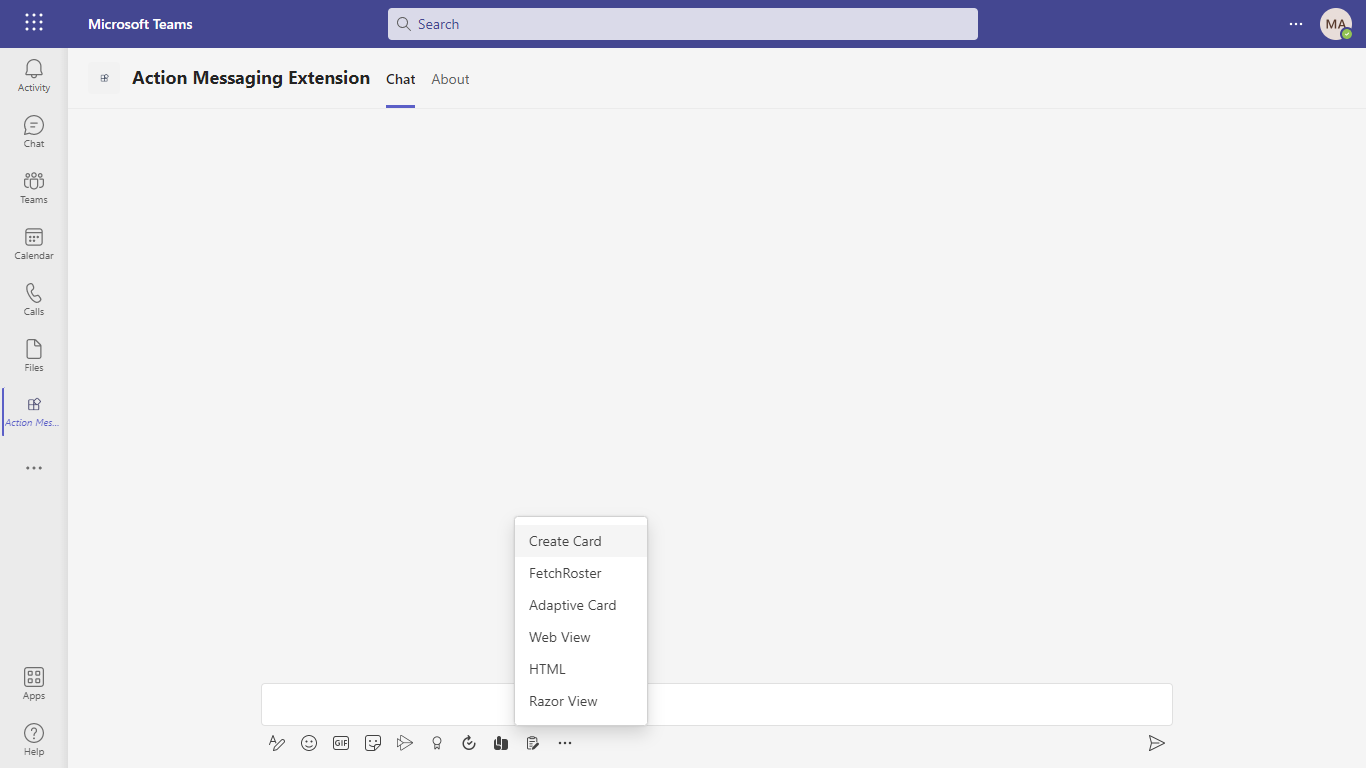
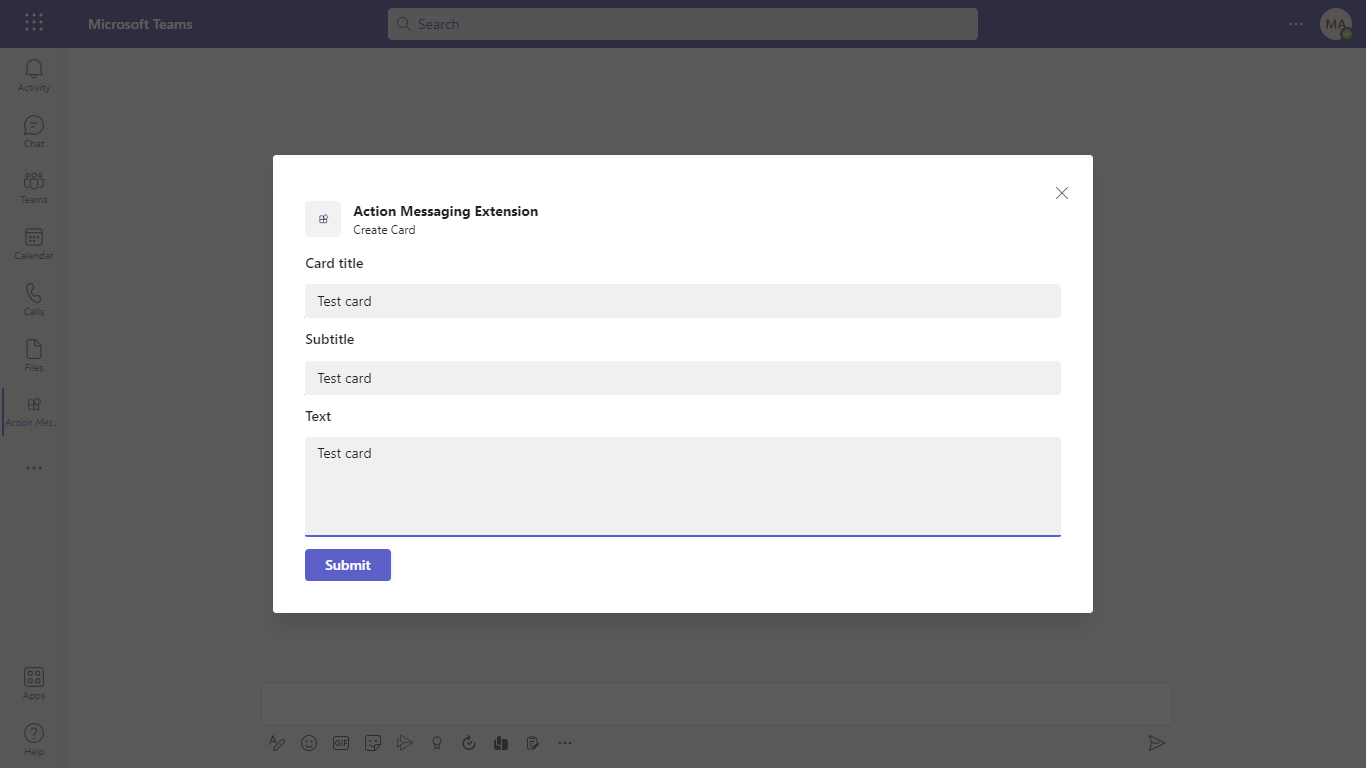
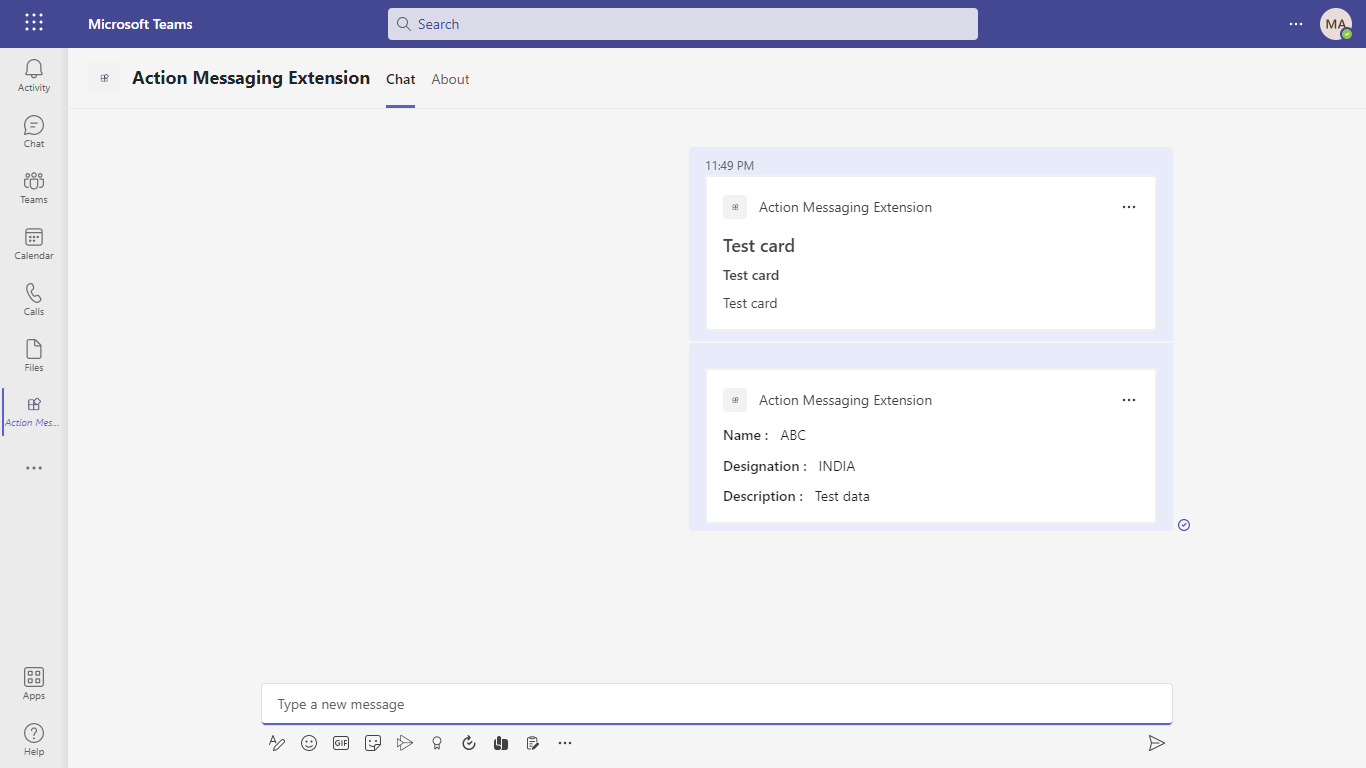
Selecting the Web View command from the Message command list.
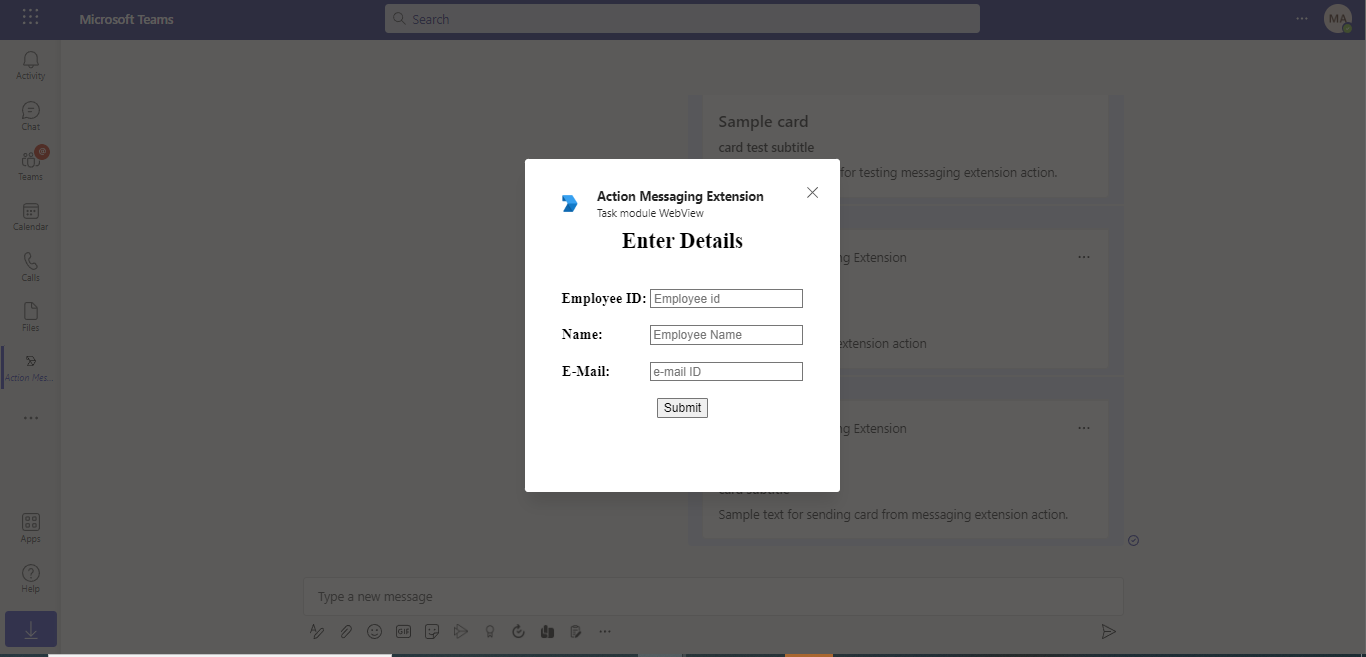
Selecting the FetchRoster command from the Message command list. Even though this action is being shown on the contextual menu, it's not implemented and is expected to fail.
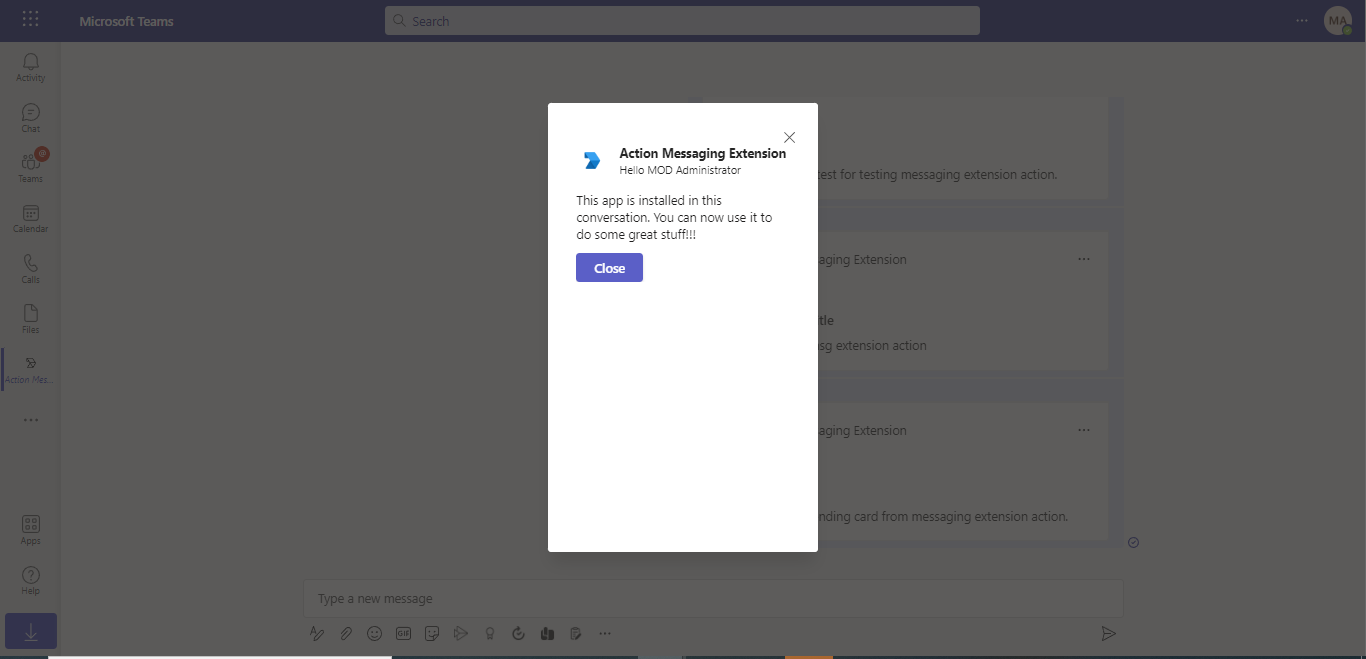
Note: Likewise you can try with all other configured commands in your app manifest.
Deploy the bot to Azure
To learn more about deploying a bot to Azure, see Deploy your bot to Azure for a complete list of deployment instructions.
Further reading
- Messaging extension action
- Spring Boot
- Maven Plugin for Azure App Service
- Bot Framework Documentation
- Bot Basics
- Azure Bot Service Introduction
- Azure Bot Service Documentation
- Azure for Java cloud developers